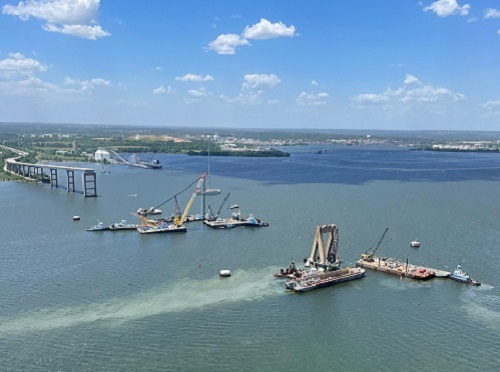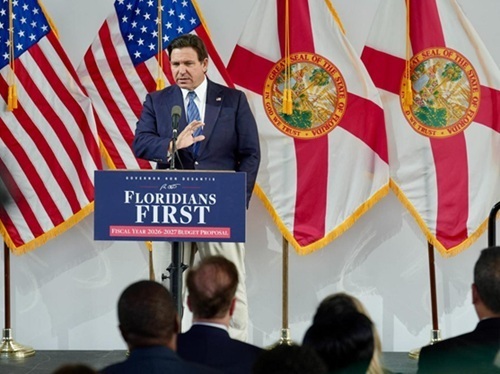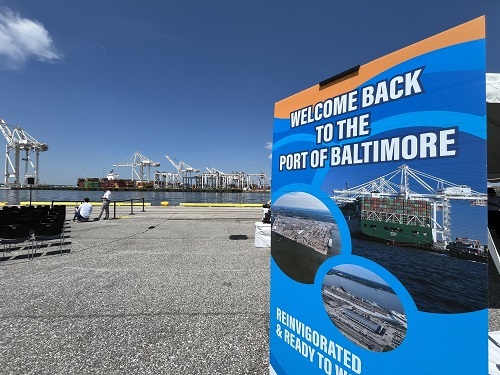The Port of Baltimore fully reopened on June 12 following the removal of the last of the Francis Scott Key Bridge debris from when a container ship struck the bridge on March 26, causing the structure to collapse. The collapse also killed six construction workers engaged in roadway repairs to the bridge deck at the time.
[Above photo by the Maryland Governor’s Office]
According to a 24-page preliminary report issued by National Transportation Safety Board on May 14, the 947-foot-long Singapore-flagged cargo vessel M/V Dali first lost electrical power and propulsion capability and then struck the southern pier supporting the central truss spans of the Francis Scott Key Bridge.
A portion of the bridge subsequently collapsed into the river, with portions of the deck and the truss spans collapsing onto the vessel’s forward deck.
Following the initial emergency response, the Key Bridge Response Unified Command was formed – comprised of the U.S. Coast Guard, U.S. Army Corps of Engineers, the Maryland Department of the Environment, the Maryland Transportation Authority (a division of the Maryland Department of Transportation), and the Maryland State Police.

The Unified Command oversaw initial debris removal and refloated the Dali on May 20. With the assistance of five tugboats and other support vessels, the Dali was then towed and pushed 2.5 miles to a local marine terminal.
The Unified Command then finished removing the last of the 50,000 tons worth of bridge debris by early June; fully reopening the 700-foot-wide by 50-foot-deep shipping channel to the Port of Baltimore in only 78 days.
More than 1,500 people from federal, state and local agencies contributed to the reopening of the main shipping channel, including 500 specialists operating dozens of pieces of equipment.
“After the bridge fell, we laid out four key directives: Bring closure to the families of the victims; clear the full federal channel and fully reopen the Port of Baltimore to vessel traffic; support everyone affected by this crisis – from our workers to our businesses; and rebuild the Francis Scott Key Bridge,” noted Governor Wes Moore (D) at a reopening ceremony.

“We have achieved the first three of our four directives. We can look out onto the Patapsco and see that the Dali is gone and the wreckage has been cleared,” he added. “But I will not be satisfied until I can look out on the Patapsco River from this spot and see the Key Bridge standing tall again.”
The Maryland Transportation Authority is currently accepting requests for proposals for a design-build team to rebuild the bridge. A project team is expected to be selected in mid-to-late summer this year, with the entire project estimated to be completed in fall 2028, the agency said.
[Editor’s note: The House of Representatives Committee on Transportation and Infrastructure held a hearing on May 15 to review and examine the federal response to the Francis Scott Key Bridge collapse, subsequent recovery operations, and fiscal concerns regarding that ongoing work.]
“With the fully opened shipping channel and return of our global cargo and cruise partners, the Port of Baltimore looks forward to once again being one of the nation’s top ports, supporting thousands of jobs,” said Maryland DOT Secretary Paul Wiedefeld at the ceremony. “Thanks to Governor Moore’s steadfast leadership and the unprecedented collaboration within the Unified Command and among our public and private partners, we’ve brought business back to Baltimore in a matter of weeks.”
 States
States
NCDOT Staff Participate in ‘Explosive’ Technical Training
December 19, 2025 States
States

